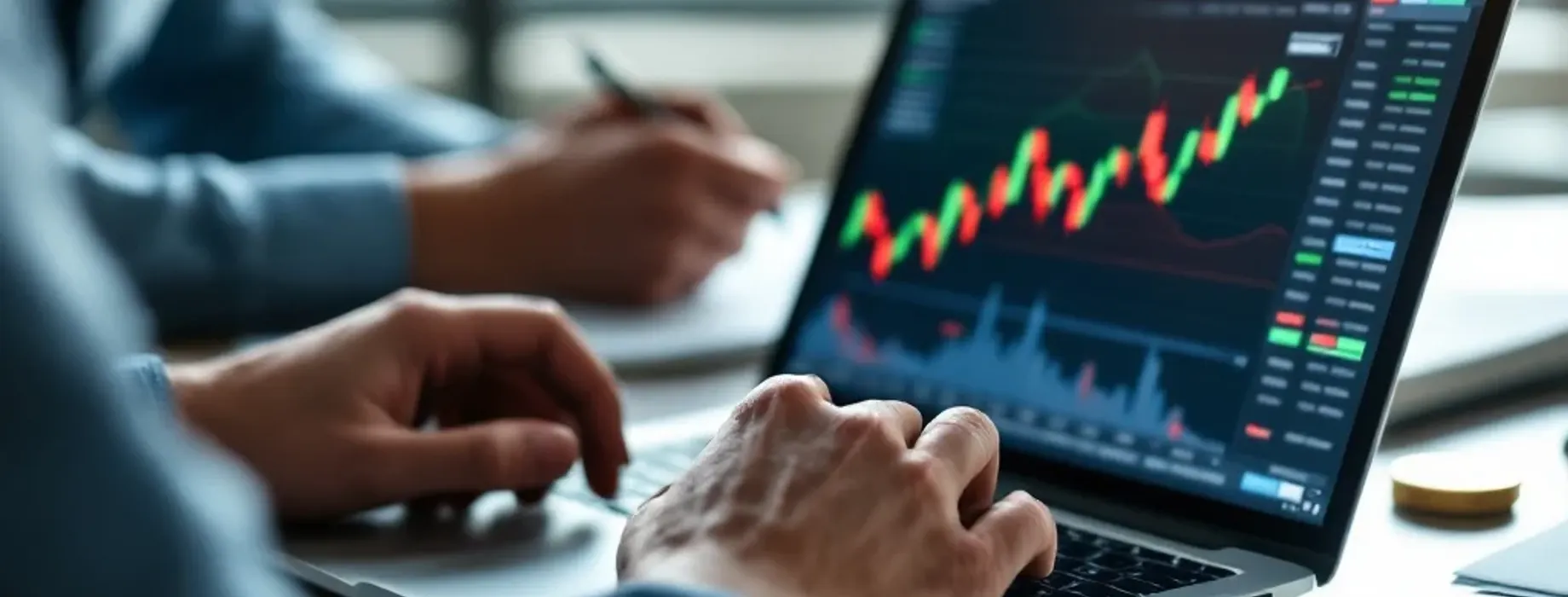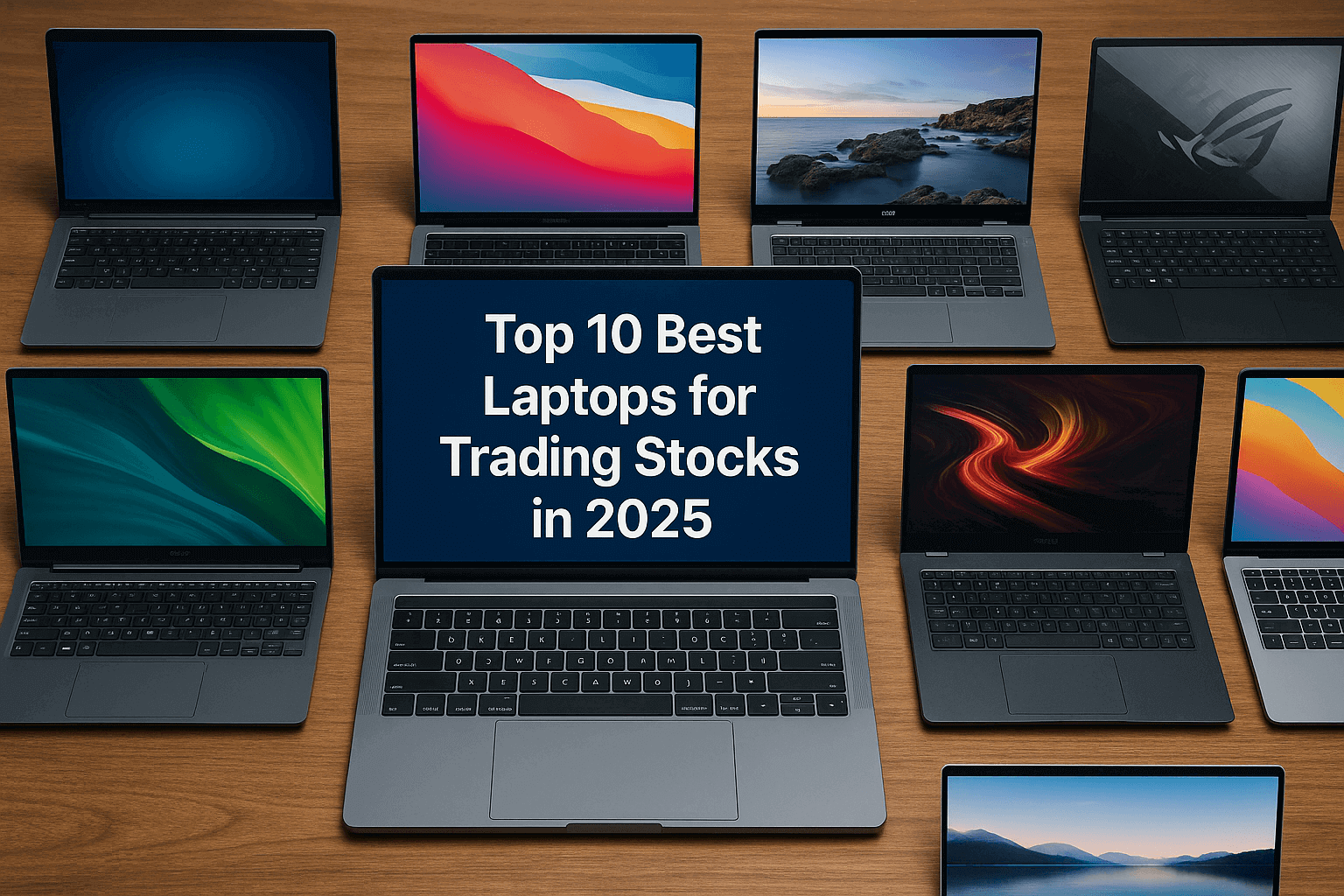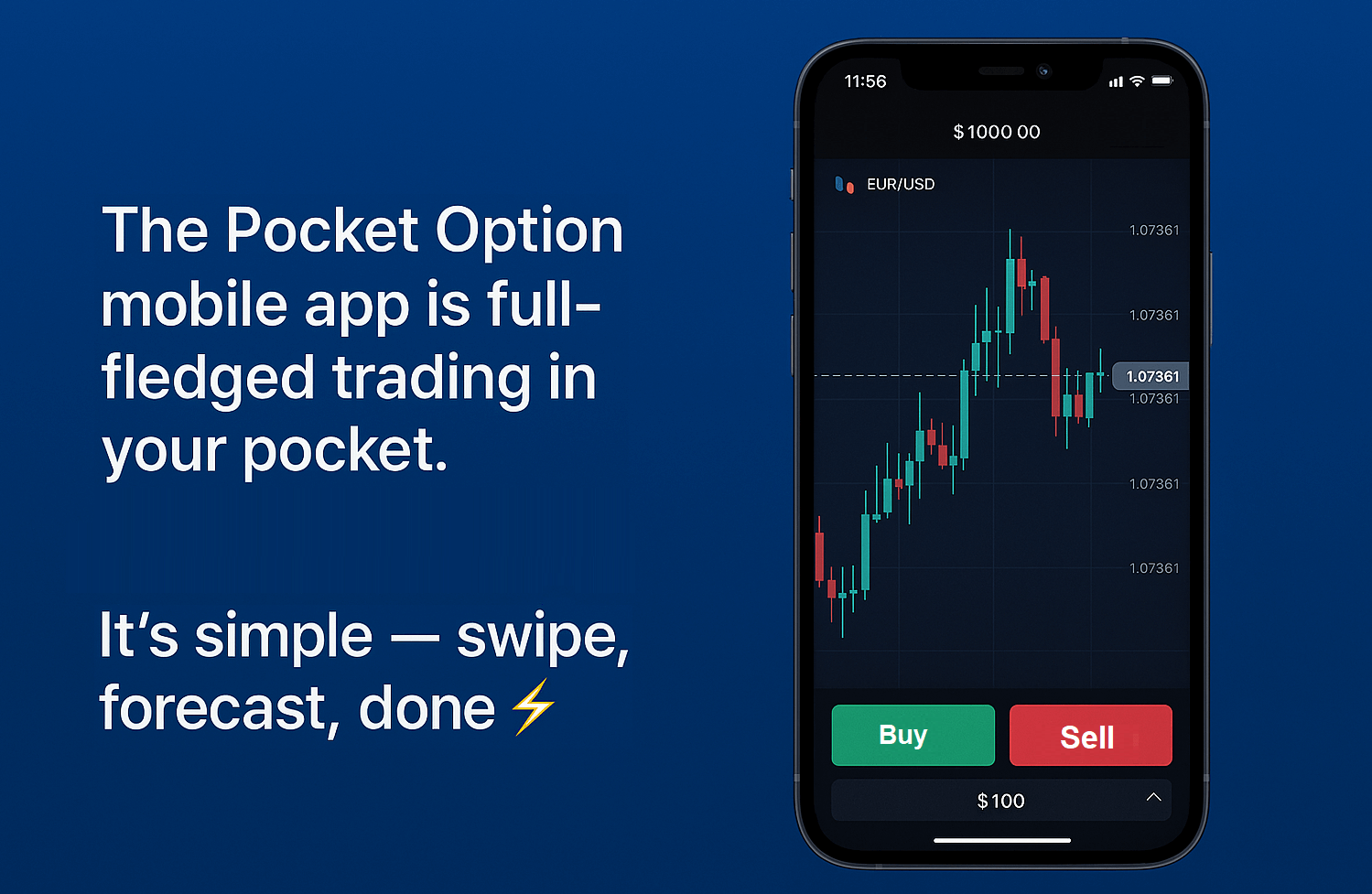- CPU: Intel i7/i9 or AMD Ryzen 7/9
- RAM: At least 16GB
- Storage: SSD for speed and reliability
- Display: Full HD+ for precise charting
- Battery: Minimum 8 hours for trading on-the-go
Top 10 best laptop for trading Stocks in 2025

The best laptop for stock trading must align with your trading goals—day trading requires speed and screen clarity, while swing traders benefit from battery life and mobility.м
Article navigation
- Start trading
- Top 10 Best Laptops for Trading Stocks in 2025
- Introduction to Trading Laptops
- Importance of Choosing the Right Laptop for Trading
- Key Features to Consider in a Trading Laptop
- Overview of Stock Trading Requirements
- Top 10 Best Laptops for Stock Trading
- Specifications to Look for in a Trading Laptop
- Operating Systems and Software for Traders
- Pocket Option: A Platform for Quick Trading
- Practical Takeaways
Top 10 Best Laptops for Trading Stocks in 2025
As stock trading becomes increasingly digital, the importance of having the best laptop for trading cannot be overstated. In 2025, the right laptop for trading can significantly enhance a trader’s performance in the fast-paced financial market.
Introduction to Trading Laptops
Choosing the best laptop for trading is crucial for any stock trader aiming for success. A trading laptop must be equipped with the appropriate specifications to handle complex trading software and multiple trading platforms seamlessly.
Importance of Choosing the Right Laptop for Trading
Selecting the right laptop for trading is essential due to the high demands of stock trading. A powerful laptop ensures smooth operation during crucial trading sessions, ultimately impacting a trader’s ability to make timely decisions and analyze trading data effectively.

Key Features to Consider in a Trading Laptop
When buying a laptop for stock trading, several key features should be prioritized. These include a high-performance processor, sufficient RAM, a dedicated graphics card, and impressive battery life to support extended trading periods without interruptions.
Key checklist:
Overview of Stock Trading Requirements
Stock trading requires a laptop that can run multiple trading apps and manage extensive data with ease. Traders should look for laptops that support Windows 11 Pro or macOS, ensuring compatibility with various trading platforms and software tools.

Top 10 Best Laptops for Stock Trading
| Laptop Model | Key Features | Average Price |
|---|---|---|
| Apple MacBook Air M4 | 13.6″ Liquid Retina display, Apple M4 chip, 8–24GB RAM, up to 18h battery | $1,099 |
| Acer Swift Go 14 | 14″ OLED display, Intel Core Ultra 7, 16GB RAM, 512GB SSD | $799 |
| Asus Zenbook 14 OLED | 14″ OLED, AMD Ryzen 7 7730U, 16GB RAM, portable design | $849 |
| Asus Zenbook S 14 (UX5406) | 14.5″ OLED, Intel Core Ultra 9, 32GB RAM, long battery life | $1,299 |
| Apple MacBook Pro 16 M4 Pro | 16.2″ Retina XDR, M4 Pro chip, 18–36GB RAM, extended battery | $2,499 |
| Lenovo Legion Pro 7i Gen 9 | 16″ WQXGA, Intel i9-14900HX, RTX 4090, 32GB RAM | $2,999 |
| Asus Vivobook 16 Flip (TP3607) | 16″ touchscreen, Intel Core Ultra 5, 16GB RAM, 512GB SSD | $699 |
| Samsung Galaxy Chromebook Plus | 13.3″ QLED, Intel Core i3, 8GB RAM, Chrome OS | $649 |
| Dell XPS 13 9345 | 13.4″ display, Intel Core Ultra 7, 16GB RAM, 1TB SSD, 14h battery | $1,299 |
| Asus ExpertBook P5 (P5405) | 14″ anti-glare, Intel Core i7, 16GB RAM, MIL-STD-810H rating | $899 |
“The best trading laptop is not only about specs, but how those specs align with your platform and workflow.” — Mark Jennings, Quant Analyst, TradeTec
Specifications to Look for in a Trading Laptop
Processor: Intel vs. AMD
Intel Core i7 processors offer exceptional performance with high clock speeds. AMD Ryzen processors provide excellent multitasking capabilities.
RAM: 8GB vs. 16GB
While 8GB may be adequate for beginners, 16GB is strongly recommended for running complex platforms without lag, making it ideal for the best laptop for day trading.
Storage: SSD vs. HDD
Solid State Drives offer much faster access to data and software—critical when running live market feeds.
Graphics: Integrated vs. Dedicated
Dedicated graphics cards are preferred for traders analyzing complex charts or using multiple monitors.
Battery Life Considerations
Choose laptops that offer at least 8 hours of battery life for reliable mobile trading.
Operating Systems and Software for Traders
Windows 11 Pro for Trading
A secure, flexible OS that supports essential trading tools.
macOS for Stock Trading
Streamlined for performance and trusted by professional traders.
Essential Trading Software and Applications
- MetaTrader 4/5
- ThinkorSwim
- TradingView
- NinjaTrader
- TradeStation
Pocket Option: A Platform for Quick Trading
Pocket Option offers seamless access to trading tools, an intuitive interface, and social trading features.
“Pocket Option is particularly effective for new traders who seek clarity without compromising on tools.” — Sarah K., Trading Consultant
- Trade with as little as $5
- $50,000 demo account
- 100+ tradable assets
- Copy trading and mobile apps
“Pocket Option gives me the speed and access I need as a short-term trader.” — Julian R.
“Great for trading on-the-go. Their interface is a game changer.” — Erika S.

Practical Takeaways
The best laptop for stock trading must align with your trading goals—day trading requires speed and screen clarity, while swing traders benefit from battery life and mobility. Combined with Pocket Option’s advanced tools, your setup can give you a trading edge. Discuss this and other topics in our community to learn from fellow traders and stay ahead of trends.
FAQ
What are the minimum specs for a trading laptop?
The minimum specs for a trading laptop include an Intel Core i5 or AMD Ryzen 5 processor, 16GB of RAM, a 256GB SSD, and a Full HD display. However, for optimal performance, consider higher-end components.
Is a dedicated graphics card necessary for trading?
While not essential, a dedicated graphics card can improve performance when running multiple monitors or dealing with complex charts. It's more important for traders who also engage in technical analysis or use graphically intensive software.
How often should I upgrade my trading laptop?
Ideally, you should upgrade your trading laptop every 3-4 years to ensure you have the latest technology and performance capabilities. However, this can vary based on your specific needs and the evolution of trading software.
Can I use a gaming laptop for trading?
Yes, gaming laptops often make excellent trading laptops due to their high-performance components, quality displays, and efficient cooling systems. However, they may be more expensive and have shorter battery life compared to business-oriented laptops.
What's the importance of a good cooling system in a trading laptop?
A good cooling system is crucial for maintaining consistent performance during long trading sessions. It prevents thermal throttling, which can slow down your laptop and potentially cause missed trading opportunities.
